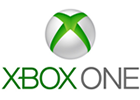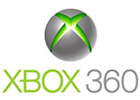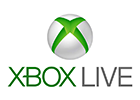



Most gaming consoles perform better with an open port. This is because a port forward allows the gaming server to connect in to the console. If you do not have a port forwarded then your console has to connect out to the gaming server.
This is fine for console-to-server messages. Sometimes a game wants to send a console-to-console message. If neither console has a forwarded port, then the console-to-console message has to go console-to-server-to-console. That extra hop causes a delay in the packet.

If at least one player has a forwarded port then the console to console message can go out one console and in another, eliminating a hop and decreasing packet latency.
The Xbox Series X is no different. Many Xbox Live games perform better if you forward ports to your console. Microsoft uses the term NAT Type to talk about whether a port is forwarded to your console or not.
You can read more about NAT Types to get a better understanding of what they mean.
Before You Forward a Port
Before you can forward a port you need to know the following things:
- The IP address of your router.
- The IP address of your Xbox.
- The TCP and UDP ports to forward (listed below)
How to locate your Router's IP Address
The easiest way to locate your router's IP address is to run our free Router Detector utility. It's a part of the Network Utilities suite of tools and it's completely free to use.
How To Forward Ports for Xbox Consoles
Our Network Utilities software makes port forwarding a breeze. You can be done in just a few minutes.
The usual process is:
- Login to your router.
- Find your routers port forwarding section.
- Put the IP address of your Xbox in the appropriate box in your router.
- Put the TCP and UDP ports for XBox Live in the corresponding boxes in your router.
- Reboot your router for the changes to take effect.
Which Ports Does Xbox Live Require
The ports for Xbox Live are as follows:
Xbox Live - Xbox One
- TCP: 53, 80, 3074
- UDP: 53, 88, 500, 3074, 3544, 4500
Xbox Live - PC
- TCP: 53, 80, 3074
- UDP: 53, 88, 500, 3074, 3544, 4500
Xbox Live - Xbox Series X
- TCP: 53, 80, 3074
- UDP: 53, 88, 500, 3074, 3544, 4500
Xbox Live - Xbox 360
- TCP: 53, 80, 1863, 3074
- UDP: 53, 88, 1863, 3074
After following those steps your ports should be forwarded. Head to our applications and games list for more port forwarding guides.
A Note about Xbox Live Ports
It is highly doubtful that ports 53, 80, and 88 are actually necessary. These are DNS, HTTP, and key exchange ports that are most likely needed for connections out from the console to the game servers, as opposed to connections in from the game server to the console.
They are most likely listed for configuring a firewall, not a router.
However, it does not hurt to forward these ports, so we list them for completeness. Feel free to remove them from the port list if you want to.
If you find this type of networking information interesting then don't forget to read about NAT Types as well.








